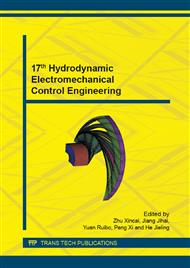p.212
p.220
p.226
p.233
p.239
p.244
p.250
p.259
p.268
Design of a Pneumatic Flow Rate Control Microvalve Driven by a Stepper-Motor
Abstract:
A pneumatic microvalve which can be used in pneumatic pressure control for lab-on-a-chip applications is presented in this paper. In order to realize a feedback control and miniaturization, a micro stepper-motor is selected to control the opening of the microvalve. After introducing the structure and working principle of the pneumatic microvalve driven by a stepper-motor, the static flow rate simulation of pneumatic stepper-motor microvalve is processed in the condition of different opening sizes of the microvalve and pressure difference over the valve. The stepper-motor microvalve is fabricated and corresponding control circuit is designed. Experiments on static and dynamic characteristics of the microvalve are carried out. Good agreement has been shown between the simulation and experimental results.
Info:
Periodical:
Pages:
244-249
Citation:
Online since:
July 2015
Authors:
Keywords:
Price:
Сopyright:
© 2015 Trans Tech Publications Ltd. All Rights Reserved
Share:
Citation:


